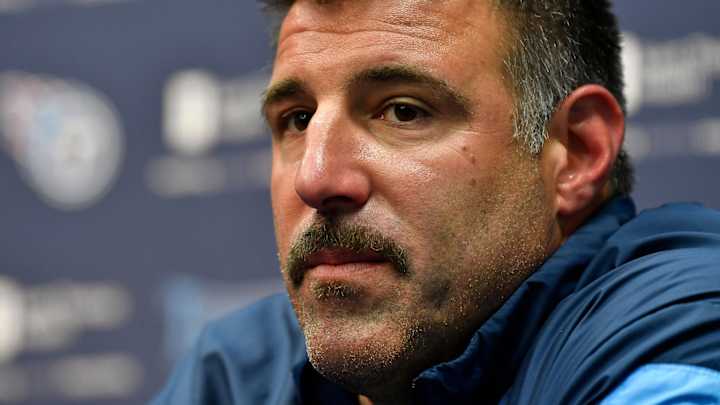Vrabel Reveals What He Considers Essential to a Good Draft

The NFL Draft is not the proverbial search for a needle in a haystack. It is not a quest to find one particular player each round among a mass of aspiring professionals.
It is more like shopping for an engagement ring. There will be options, and it is up to the shopper – the general manager and his staff, in this case – to find the one who is the right style, the proper fit and will make the coach want to show it off for years to come.
That is how Mike Vrabel has come to view the selection process in his three seasons as Tennessee Titans coach.
“I’m going to use Nate Davis as an example,” Vrabel said Thursday during a virtual question-and-answer session with Titans season-ticket holders. “Nate was in a group of three players, and around the time that he got picked we needed to determine which player out of that group was going to be best for us. And I think we made a great decision, seeing the player that he’s become and [knowing] that he will continue to get better.”
The Titans selected Davis at No. 82 overall (the 18th pick of the third round) in 2019. Four choices earlier, Miami picked a guard, Michael Deiter. Eight selections after Davis, Connor McGovern went to Dallas. Of the three, Davis is the only one who has been a starter for more than one season.
A similar thing happened in preceding round when Tennessee took wide receiver A.J. Brown at No. 51 overall. Brown was the first wide receiver selected in a span of 15 picks, but over the next 12 choices, which extended to the end of the second round, five more went including Mecole Hardman to Kansas City (No. 56) and D.K. Metcalf to Seattle (No. 64). Among those six, Brown is second to Metcalf in career receptions and yards and is one of three (Hardman and Metcalf are the others) named to a Pro Bowl.
“They’ve got the ranking and A.J. [Brown] is in here with these other guys, and it’s like, ‘OK, how do you stack them? Which one is best for you?’” Vrabel said. “… This is what I’ve really noticed: You’re going to have clusters of players. You’re going to have players that are clumped together.
“When I watch the draft, that’s kind of how … when your draft board is where you want it, you kind of see these clumps of players and they all go around the same area, and you have to figure out which one’s best for you,”
Perhaps that explains why the Titans did not get nearly as much out of their 2020 draft class during their rookie season as they did Brown, Davis and virtually every other 2019 draft pick.
When Tennessee selected tackle Isaiah Wilson at No. 29, it was another 29 choices before another offensive lineman – regardless of position – was taken. When they took Kristian Fulton in the second round (No. 61), he was the third cornerback off the board in a span of 12 picks. Fifteen choices followed before another team went with a cornerback.
“It’s important that this offseason that we learn, that I learn personally from last year, that we try to improve,” general manager Jon Robinson said recently. “I would say that there has been more positive in the roster building than negative around here. The last five years, I’m proud of what we’ve done so far. We’re one of – I think – three teams to have five consecutive winning seasons, and we’ve been to the playoffs three times, won the division this last year, won 11 games to get in the playoffs. Not to toot our own horn, but that’s a positive thing and we’ve got to be better.”
One of the best ways to do that, apparently, is to have choices when it comes to drafting players.

David Boclair has covered the Tennessee Titans for multiple news outlets since 1998. He is award-winning journalist who has covered a wide range of topics in Middle Tennessee as well as Dallas-Fort Worth, where he worked for three different newspapers from 1987-96. As a student journalist at Southern Methodist University he covered the NCAA's decision to impose the so-called death penalty on the school's football program.
Follow BoclairSports